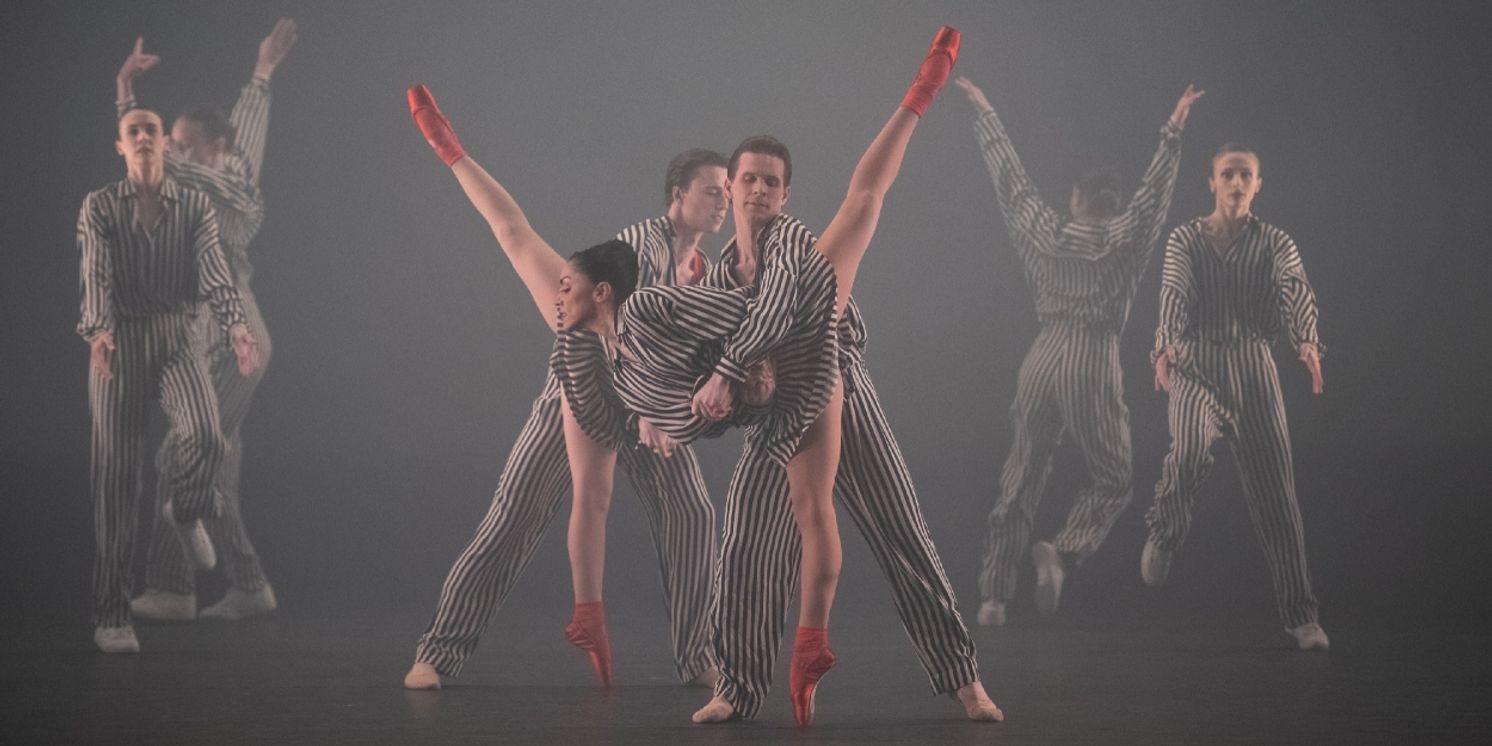Review: Twyla Tharp Puts Originality Center Stage at New York City Center
In “In the Upper Room” and “Nine Sinatra Songs,” Tharp and her dancers create a show so unique imposters be damned.

For those who may not know, Twyla Tharp's "In The Upper Room" and "Nine Sinatra Songs," running October 19th-23rd at The New York City Center, is the program that's been advertised in every subway station in Manhattan for months. The ad -- featuring Tharp's dancers in a stunningly beautiful costuming smiling like they're at a very fun, very exclusive party -- is sexy and sharp and undeniably intriguing. Just like the show.
The program begins with "In the Upper Room," a ballet in nine parts. When the dancers emerge -- literally, they are completely invisible on the mistyfing, smoke-laden stage -- they could be angels come to join an afterlife rife with raucous fun. Thirteen dancers take the stage over 39 minutes and, from the moment when the curtain rises on just two bodies in stark, white blindness, no single body ever stops. Constant motion abounds, but it is not manic or disorienting. It's effortless and buoyant. The ensemble moves as if they born doing choreography that feel conjured from the wildest depths of imagination.
Nothing -- not the dancer that flips over her partner's shoulder just to slither down his back, or the pirouettes taken with a flexed foot or the formations that ebb and flow like a river -- feels predictable. Though the show premiered in 1986 and is easily as one of Tharp's great classics, it is not something that will ever become trite, or even familiar. Tharp's commitment to being unique but not irreverent creates a work that makes it easy to surrender to the joy of being truly entertained.
This bit of magic is helped the fact that every dancer in the current company is masterful -- so much so that to name names would require a list of the entire cast. The performers are comfortable on stage, as if they are truly at a party that comes with an audience. What stands out, however, is the way they look at each other. "In the Upper Room" has no plot, it doesn't beg for dancers to peer romantically at one another, and yet there's emotion between each of the dancers. Maybe in each look is trust -- "In the Upper Room" is an exhausting piece and to look to another dancer for reassurance it'll be over soon would not be absurd -- or just a quick glance to share the thrill of creating something beautiful.
Philip Glass created a scored specifically for "In the Upper Room." As a composer, Glass is known for doing a lot with very little -- short repetitive phrases turn into whole songs -- and that is never more apparent than in this work. The music is as propulsive as the dance, the energy so perfectly matched the two artforms melt into one another. There is no "In the Upper Room" set to any other score. This symbiosis is aided by the costumes designed by Norma Kamali. Black-and-white striped jumpsuits with red flair -- the color appears in a pointe shoes, a leotard, a shirt -- is simple, but sumptuous. The clothing's flowy style, arguably Kamali's trademark, elevates the pieces to something classic and clean, yet not constricting.
When the lights go down on "In the Upper Room" expectations are so high there is an edge of nerves before the curtain rises on "Nine Sinatra Songs." The nerves are useless because the expectations are effortlessly defied. The stage has transformed from a foggy, white other-place into a dazzling dance hall. A disco ball spins above a sparkly, darkly lit stage. Two dancers appear and begin a series of seven duets and two ensemble numbers set to Frank Sinatra's most recognizable songs. Each song tells a short story -- long-time lovers sway to "Softly as I Leave You," while young lovers bumble about, with grace, to "Somethin' Stupid.'" The sultry take on "One for My Baby" is red hot, finding sex appeal in the least expected places, while "That's Life" perfectly captures the perseverance that only comes after being brought to one's knees.
 "Nine Sinatra Songs" continues what "In the Upper the Upper Room" started, which is to reveal how something complex captures the mind. There's no way to work these pieces out, to pick them a part into something that feels like it's been seen before. In an era where everything feels like a repeat -- or a remake -- to see something that would feel fresh no matter how many times it's performed is almost a relief. But then that's just Twyla Tharp doing what she has, and will always, do best: putting originality center stage.
"Nine Sinatra Songs" continues what "In the Upper the Upper Room" started, which is to reveal how something complex captures the mind. There's no way to work these pieces out, to pick them a part into something that feels like it's been seen before. In an era where everything feels like a repeat -- or a remake -- to see something that would feel fresh no matter how many times it's performed is almost a relief. But then that's just Twyla Tharp doing what she has, and will always, do best: putting originality center stage.
Twyla Tharp's "In The Upper Room" and "Nine Sinatra Songs" runs Oct 19th-23rd at The New York City Center. Tickets star at $35. The show runs approximately 95 minutes with one intermission. Mask must be worn in the theater.
Reader Reviews
Videos

